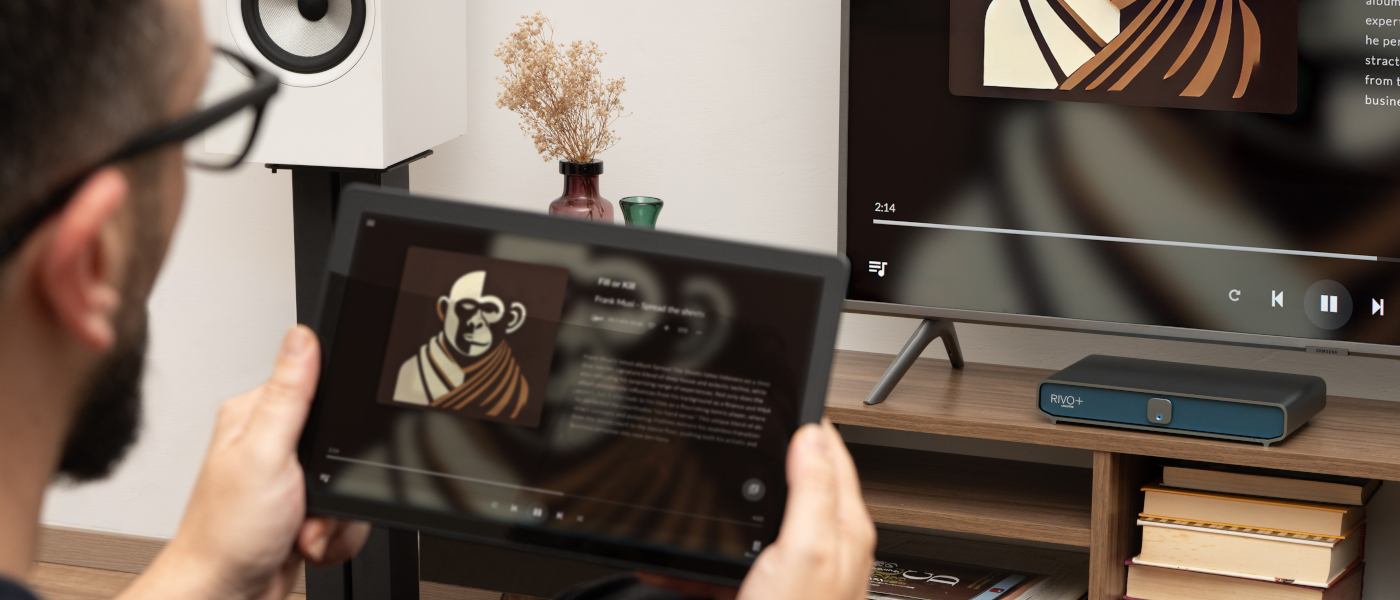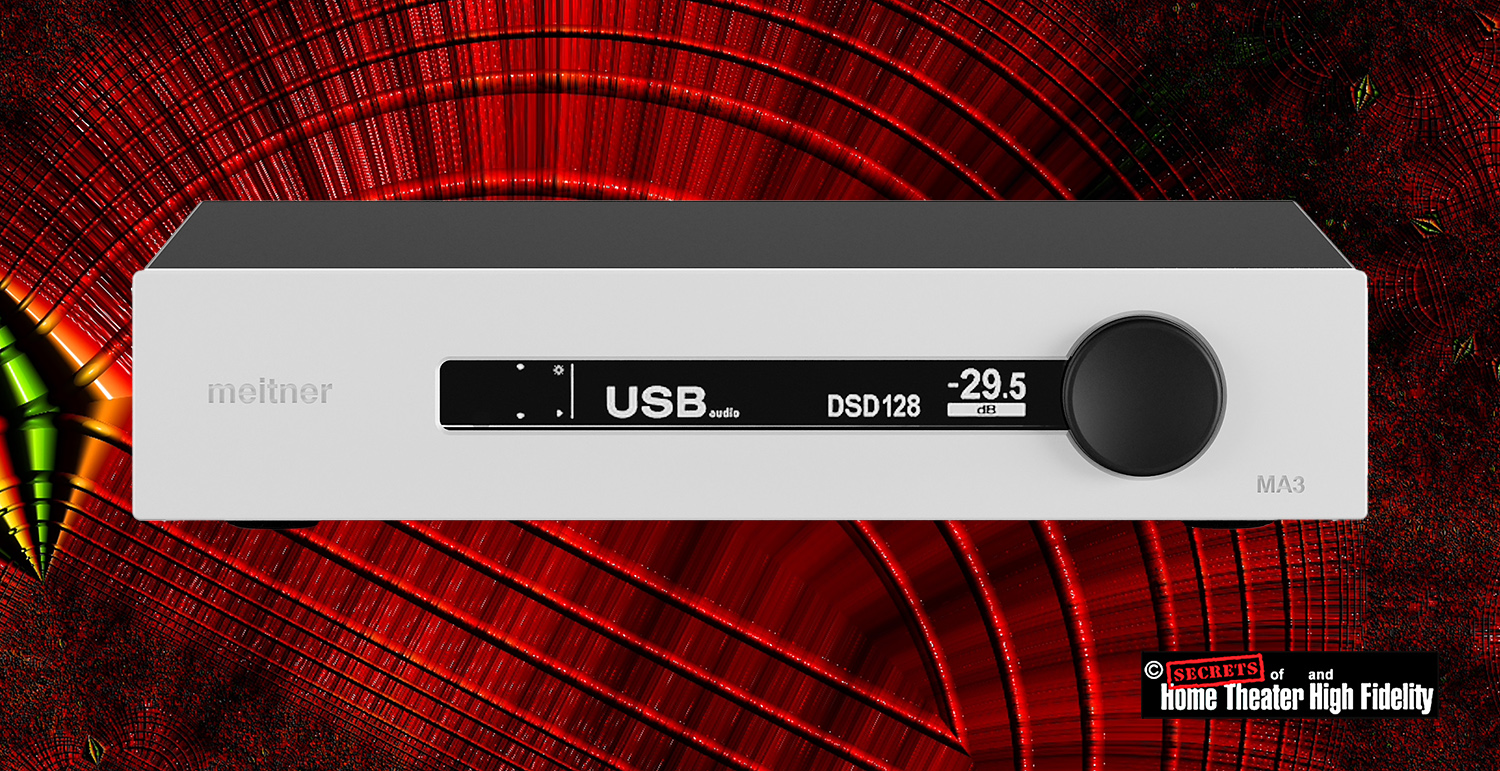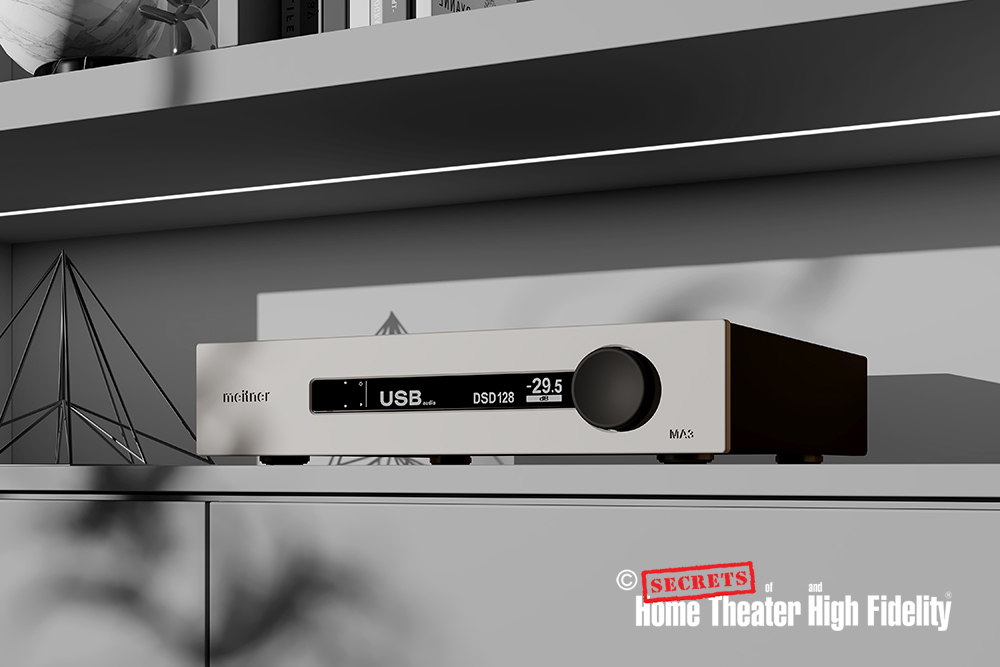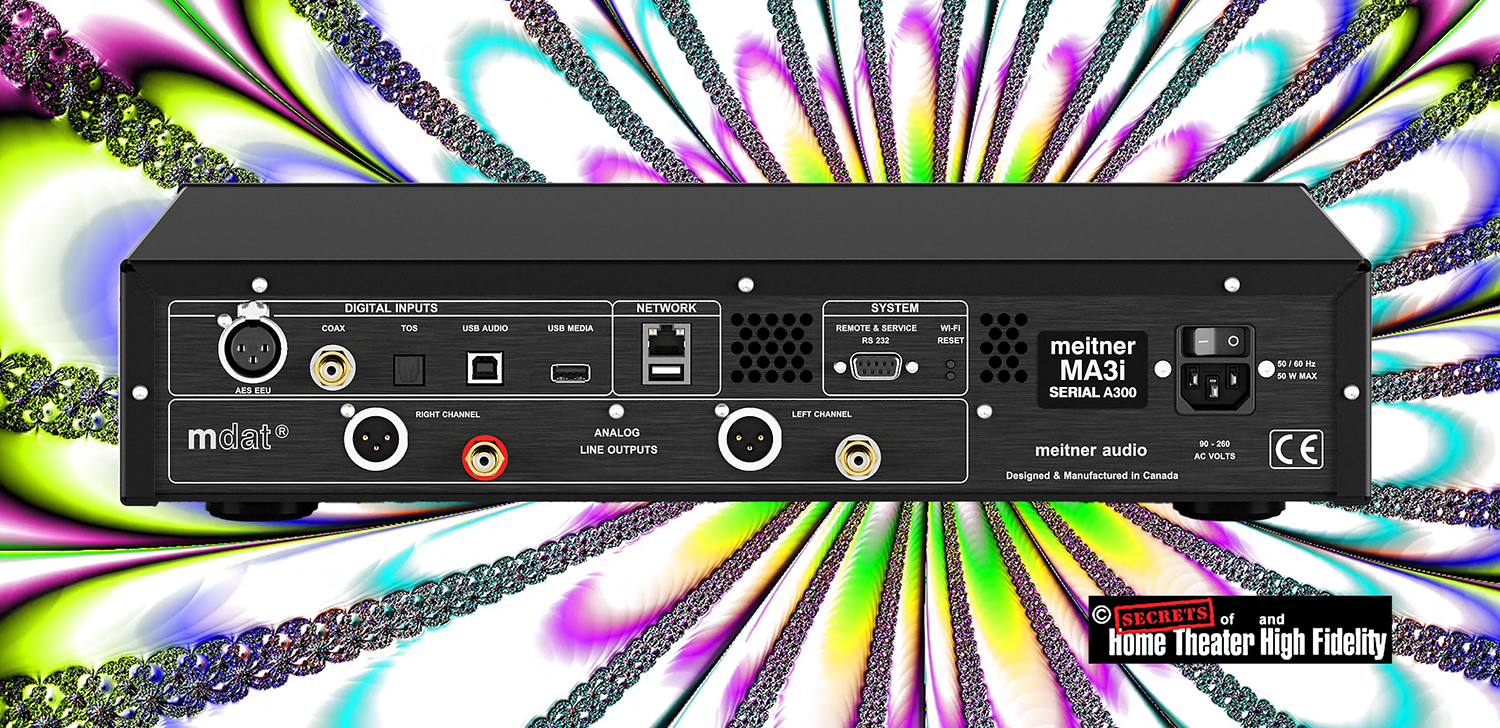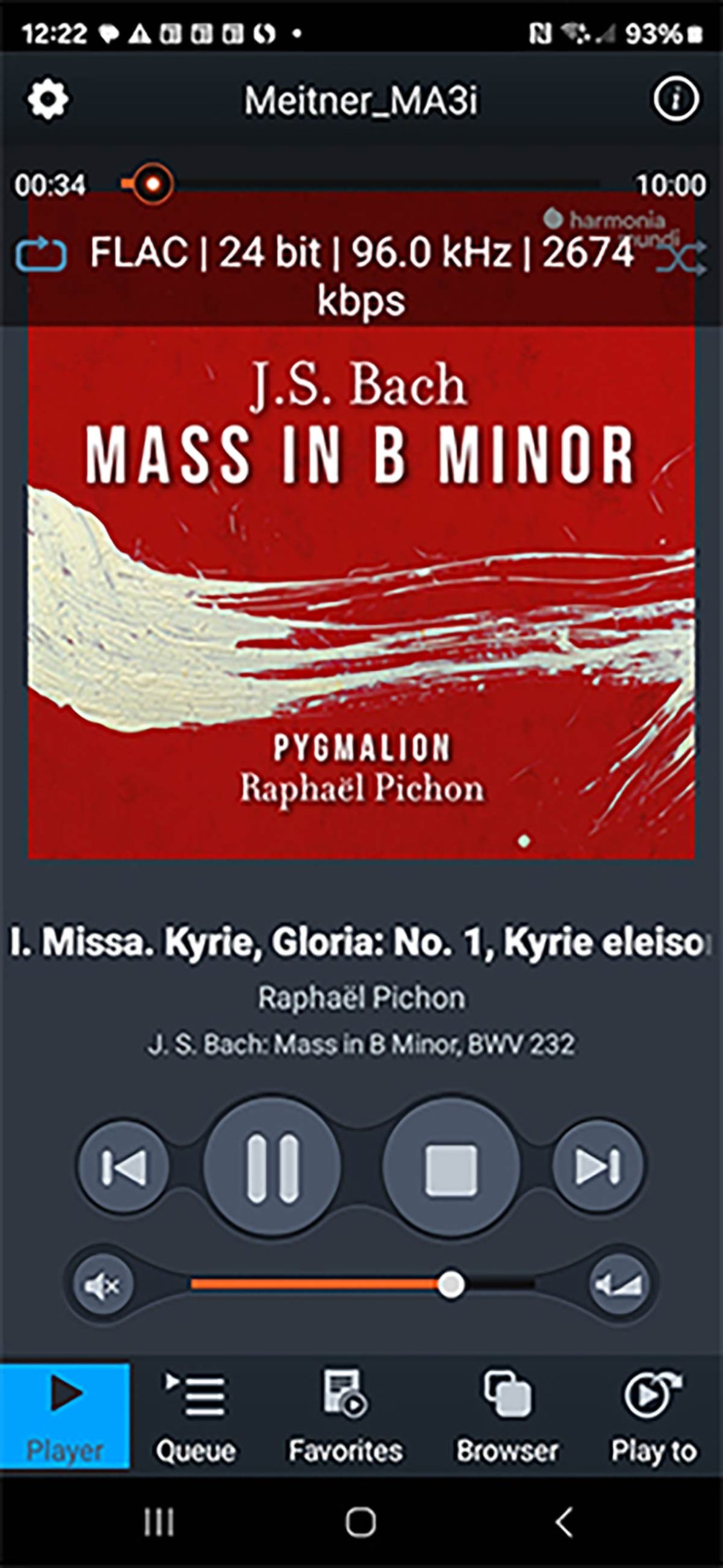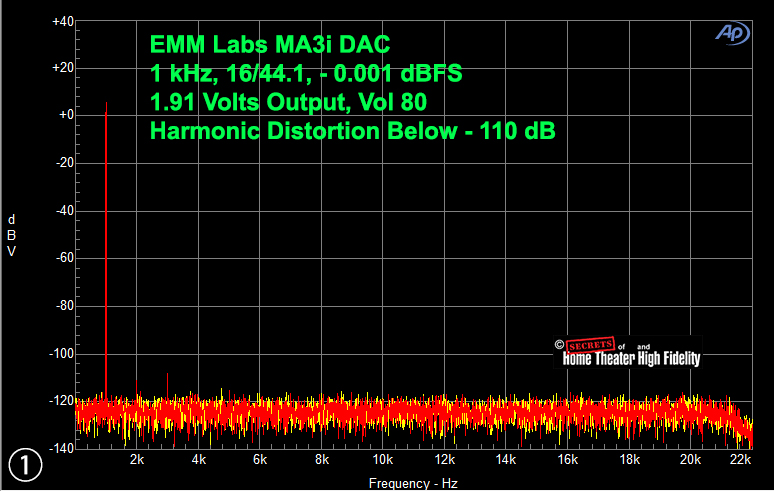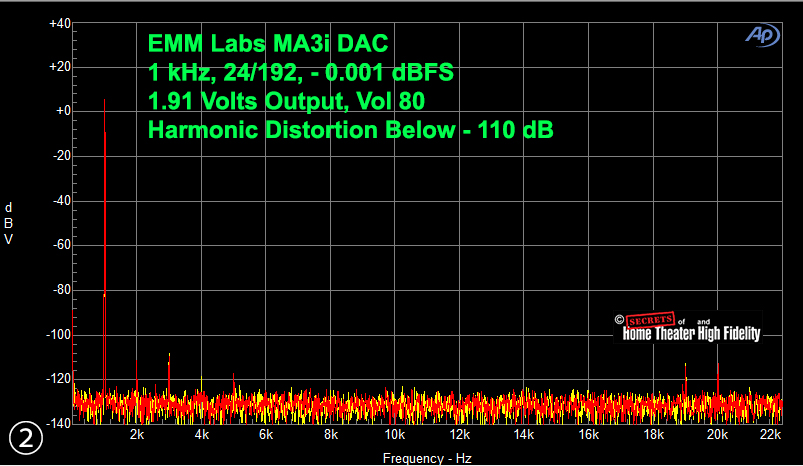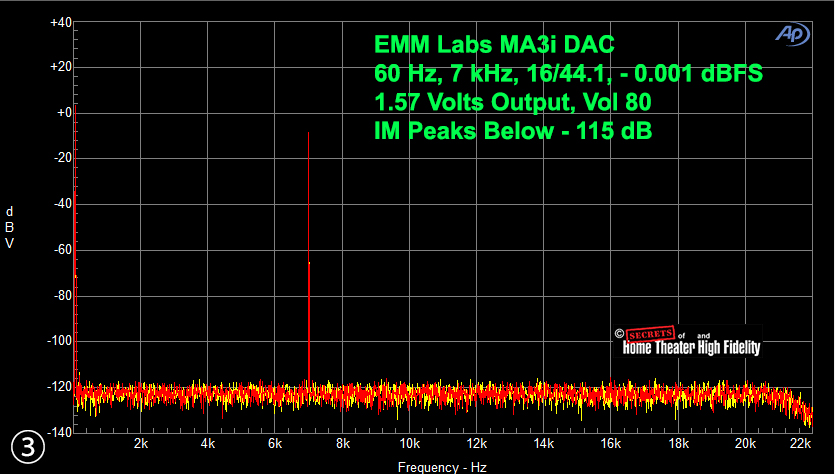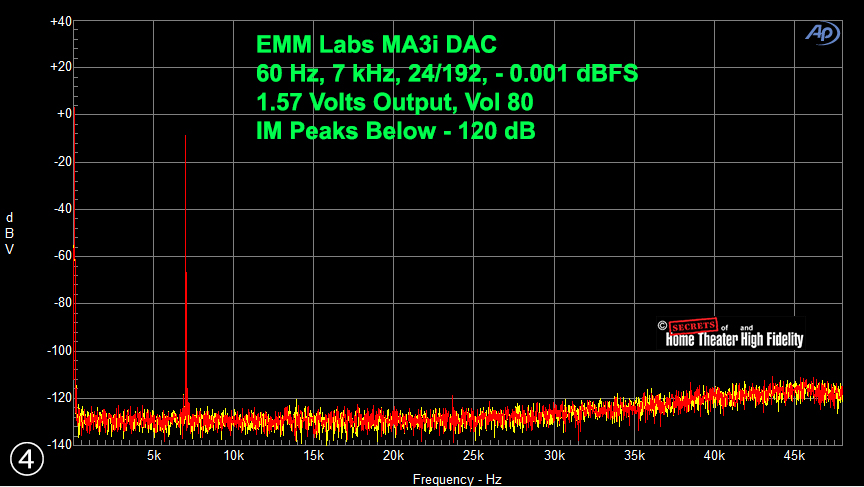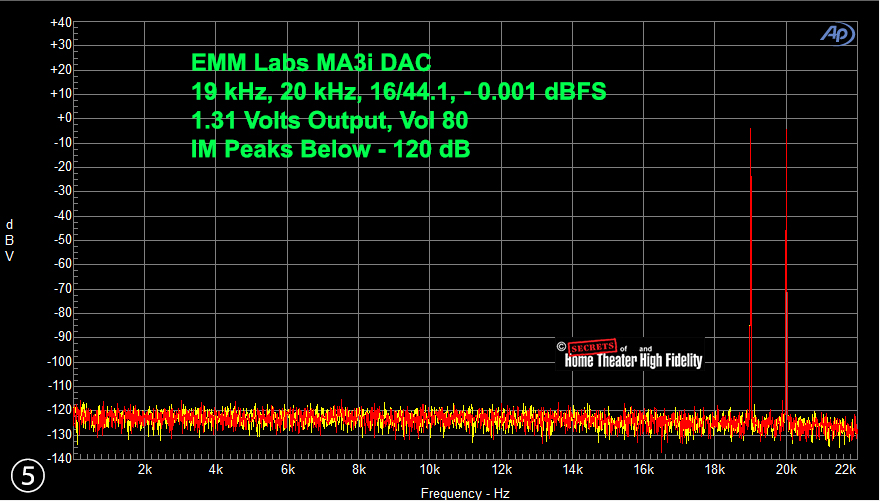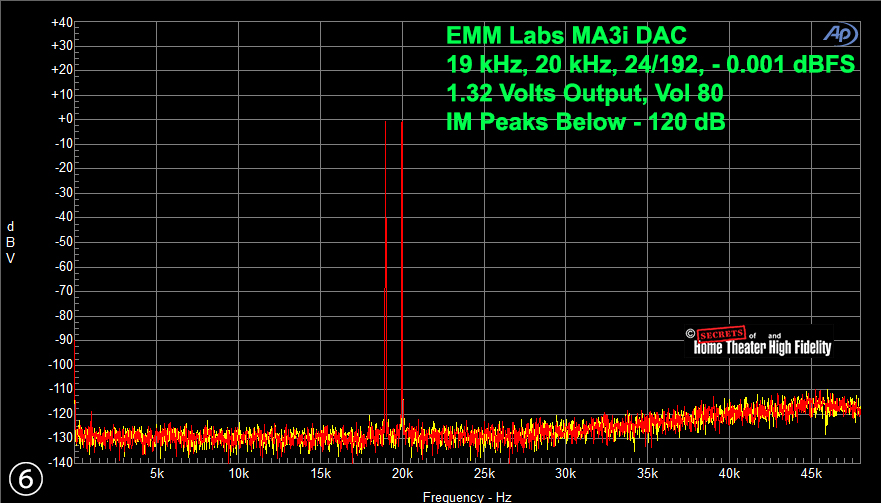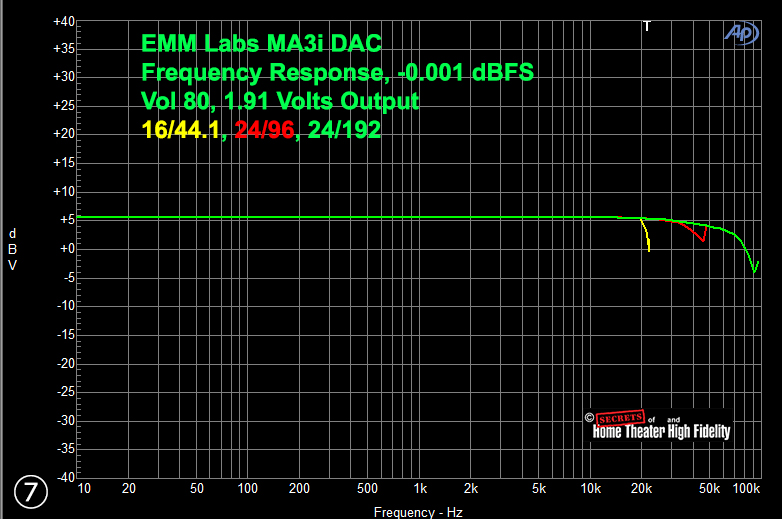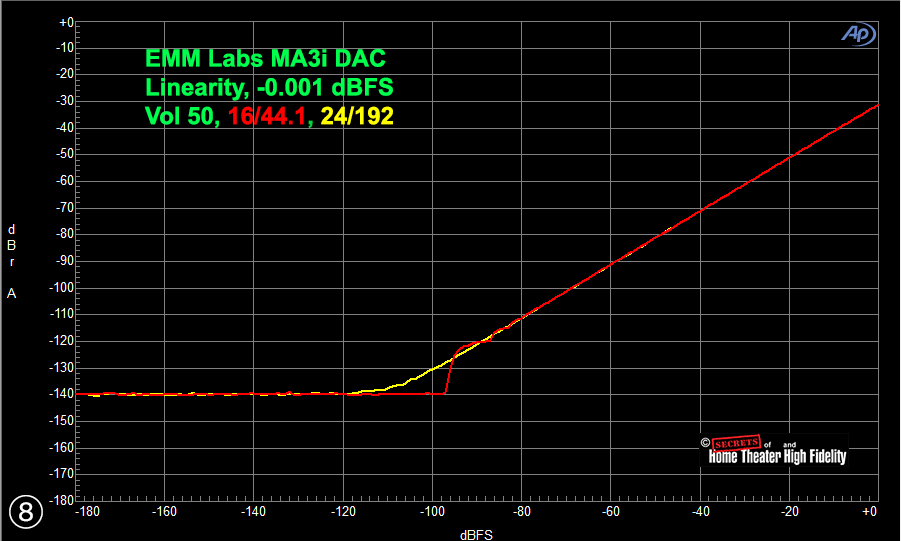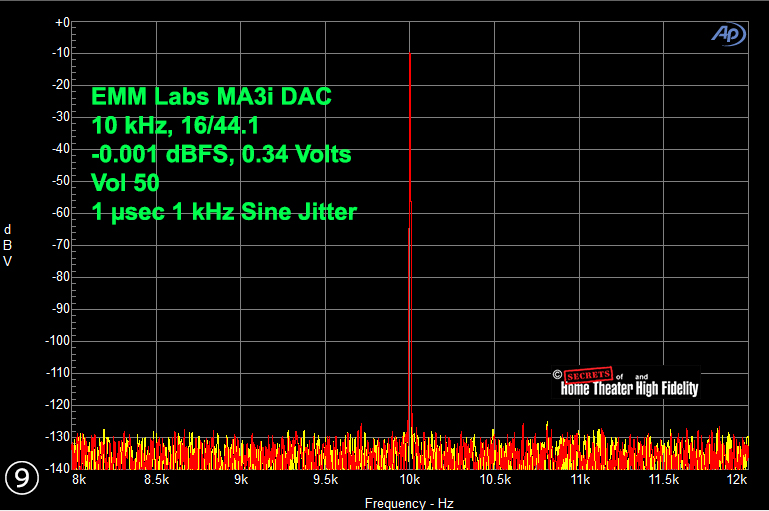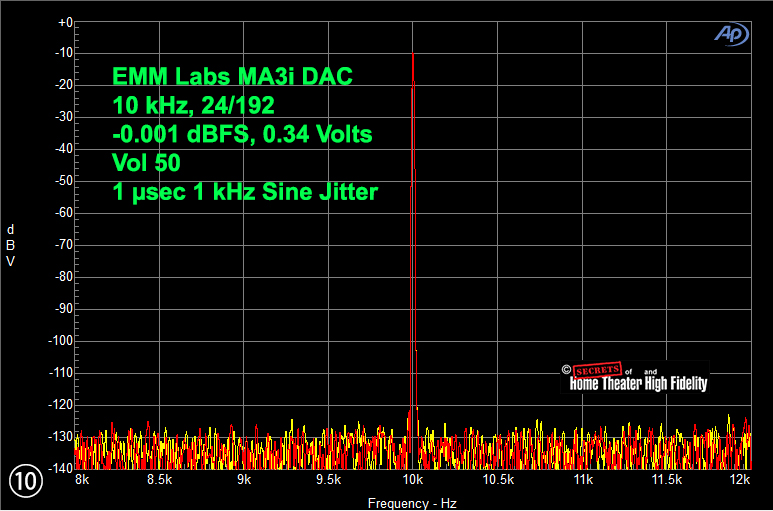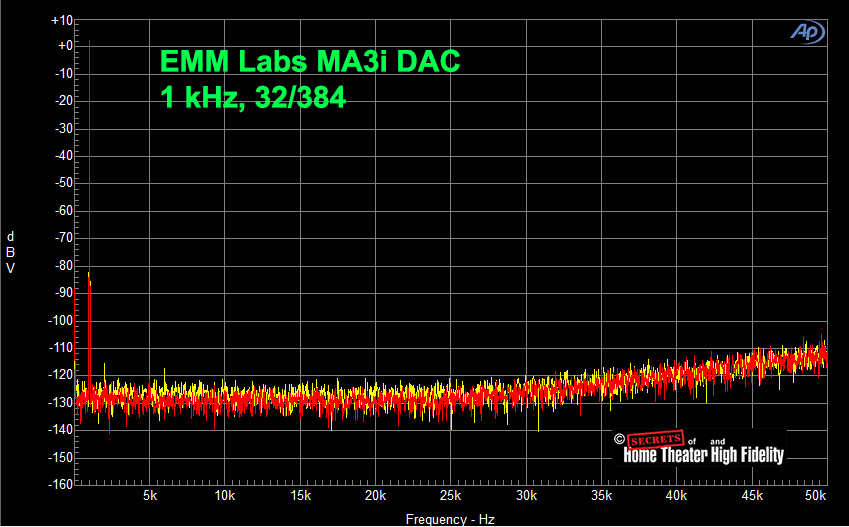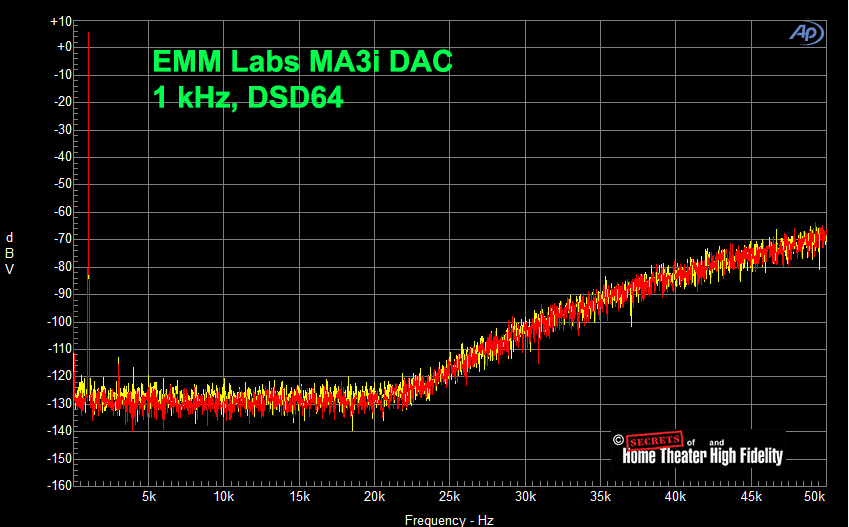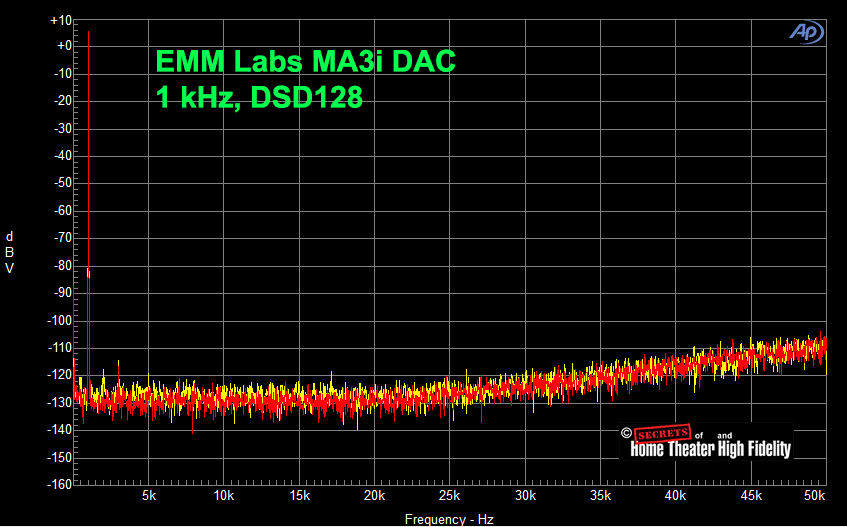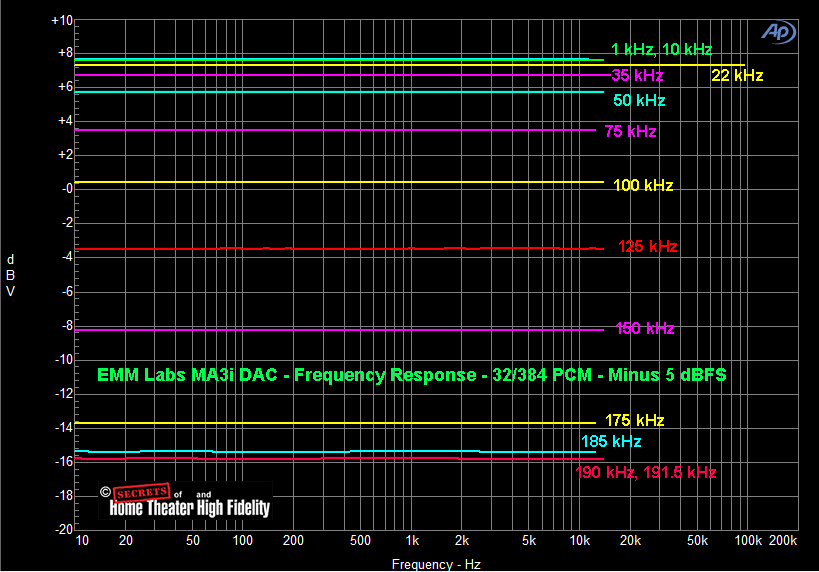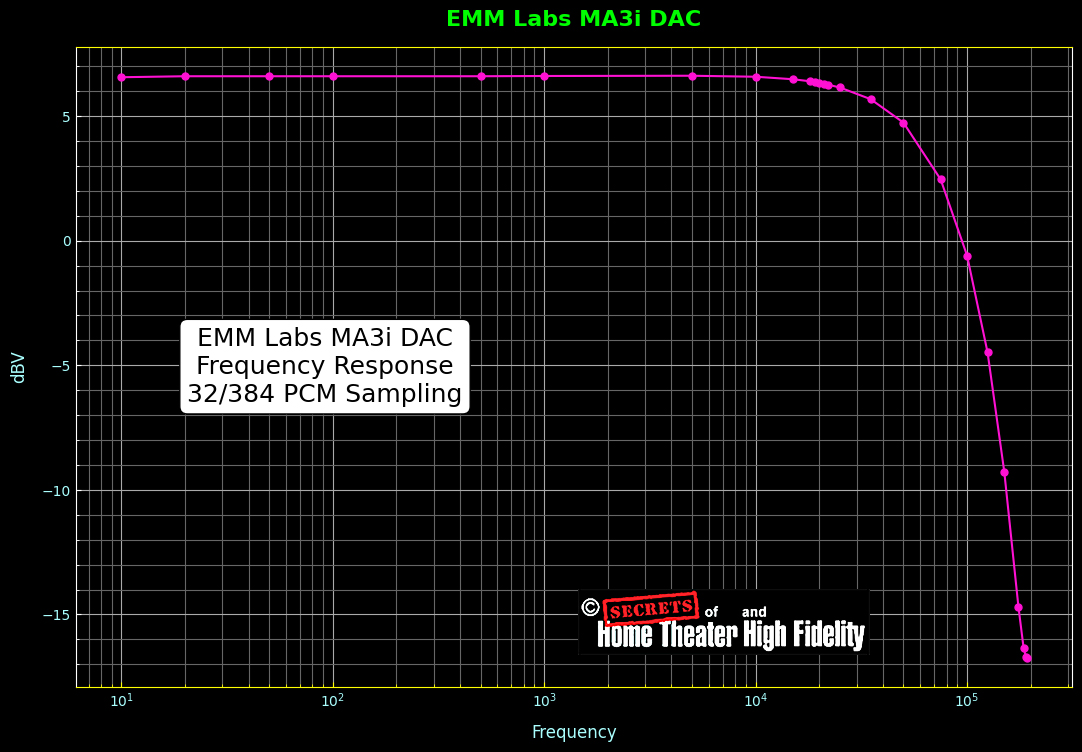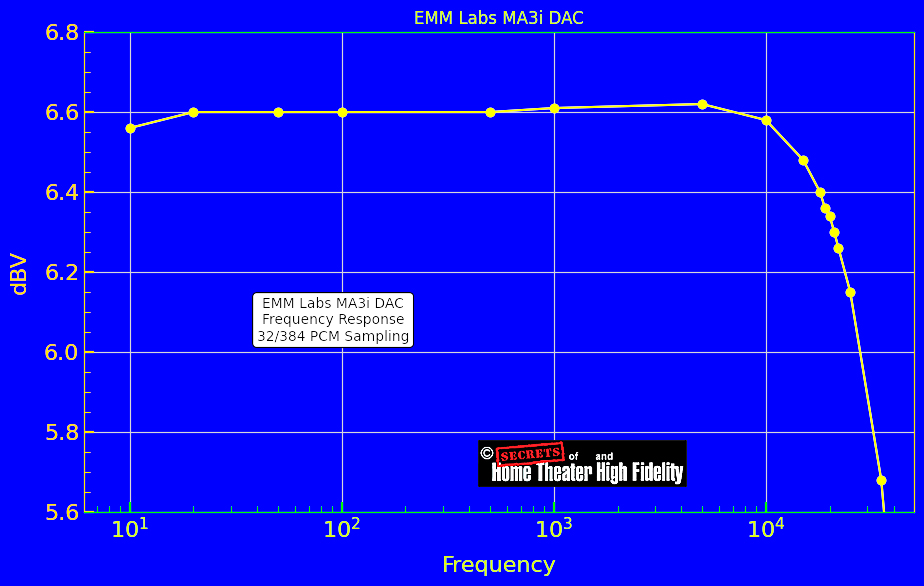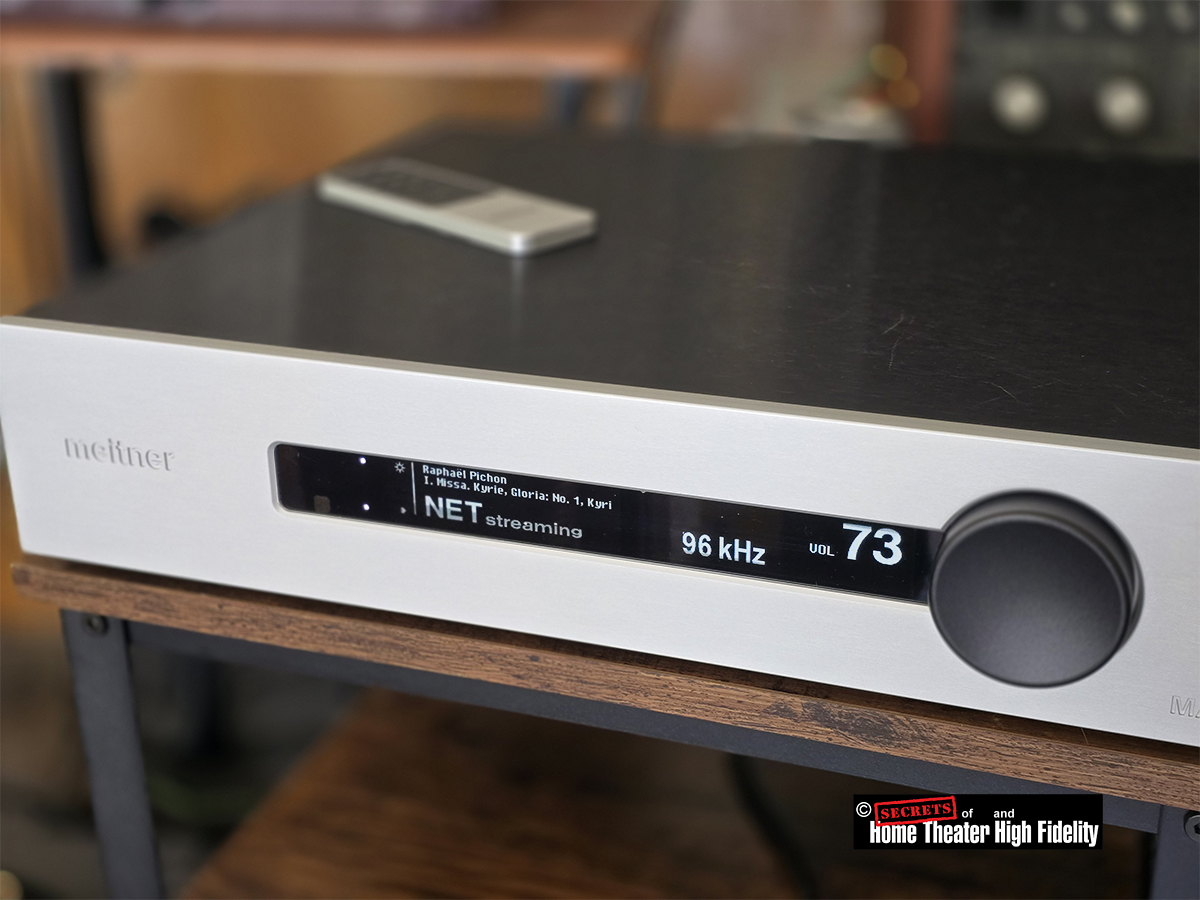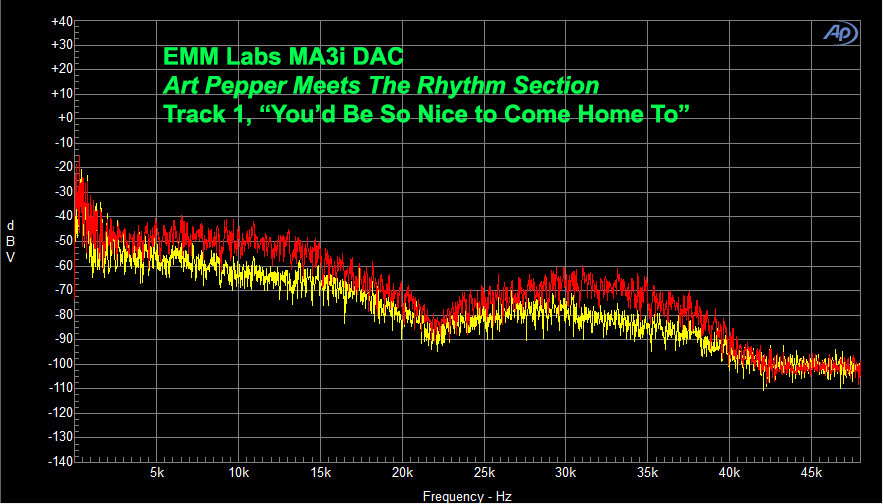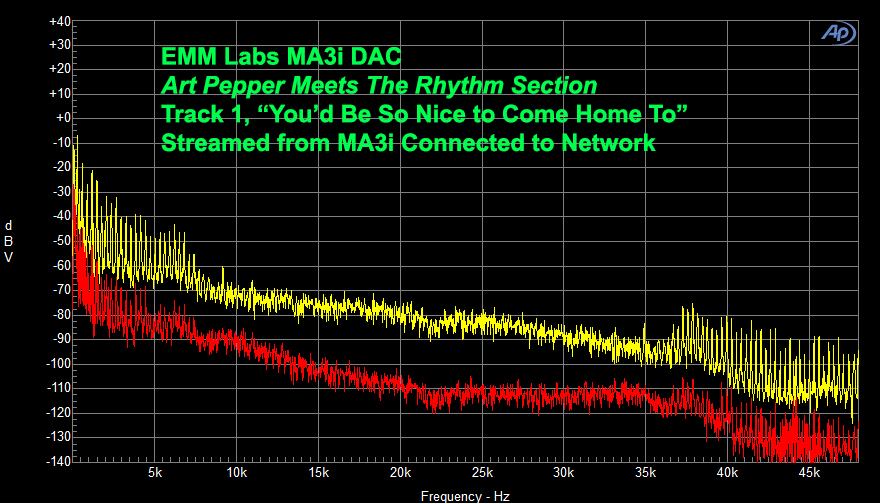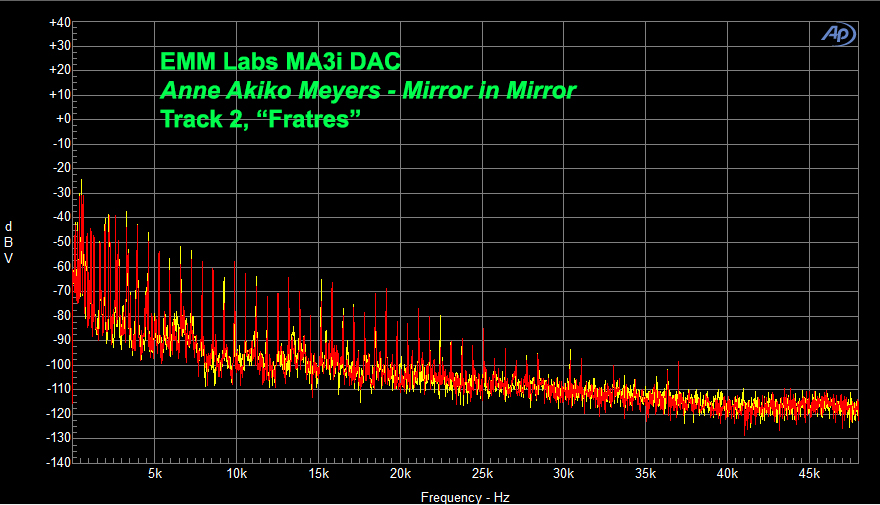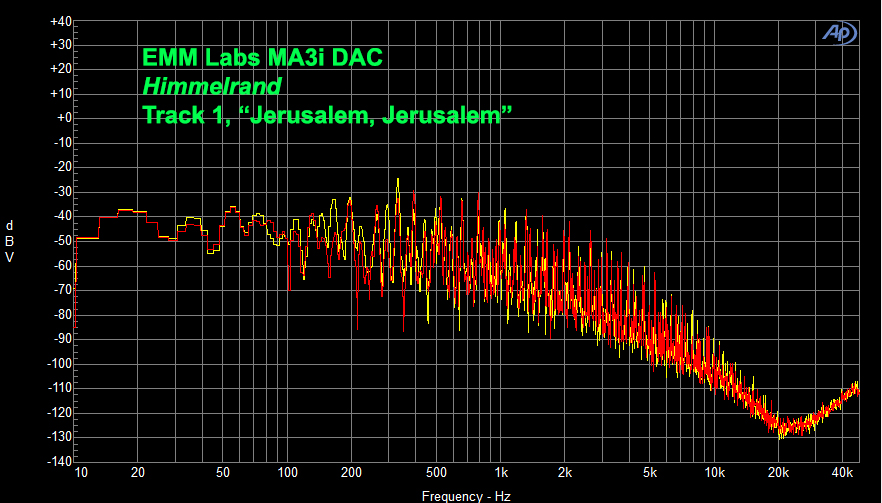But not everyone can afford their $35,000 DA2i DAC, so they offer a range of units. The new EMM Labs MA3i is their “entry-level” model.
EMM Labs MA3i Digital-to-Analog Converter (DAC)
- Superb build quality
- Bright, easy-to-read front panel display
- Easy setup for use as a streamer
A high-quality Digital-to-Analog Converter (D/A Converter, DAC) is a crucial component in any high-fidelity audio system, as it directly impacts the clarity, detail, and overall accuracy of sound reproduction. The primary function of a DAC is to convert digital audio signals into analog waveforms that can be amplified and played through speakers or headphones. A poor-quality DAC can introduce unwanted noise, distortion, and loss of detail, ultimately degrading the listening experience. Conversely, a high-end DAC ensures that audio signals remain as true to the original recording as possible, preserving nuances such as instrument separation, dynamic range, and spatial imaging.
For audiophiles, musicians, and sound engineers, investing in a premium DAC is essential for achieving the best possible audio performance. The difference becomes especially noticeable when listening to high-resolution digital audio files, where lower-quality converters may fail to reproduce the full depth and texture of the sound. High-quality DACs utilize advanced components and precision engineering to minimize jitter, reduce signal degradation, and provide a cleaner, more transparent sound. Whether used in a home audio system, professional studio, or portable listening setup, a top-tier DAC enhances the entire audio chain, ensuring that listeners experience music as the artist intended.
The new EMM Labs MA3i DAC appears to meet the demands of dedicated audiophiles.
CLASS:
Digital-to-Analog Converter (DAC)
DIGITAL INPUTS:
AES/EBU, S/PDIF COAX, TOSLINK, USB Audio and Network (RJ45) supports up to 24bit/192kHz and DSD128. USB Audio also supports 2xDSD (DSD128), DXD (352/384kHz), and full MQA® decoding. Network (RJ45) also supports full MQA® decoding
The USB Audio (USB-B) connection supports up to 24bit, 192kHz PCM, DXD 352 and 384kHz, DSD64 and DSD128 (2xDSD) and MQA® using USB 2.0 cables
For connection to USB flash drives (FAT32 or NTFS formatted), you connect USB flash drives to the USB-A jack to play back audio files using the mConnect Control app. For Android and IOS tablets, use the mConnect Control HD app to use the landscape interface option. File playback supports up to 24/192 and accepts AAC, AIFF, ALAC, FLAC, MP3, WAV, WMA, and MQA® file formats. It also accepts DSD64 playback (via DoP streaming) in DSF or DFF file formats. The MA3i provides full MQA® unfolding when playing back MQA® files (up to 192kHz)
STEREO ANALOG OUTPUTS:
One Pair Balanced (XLR)
One Pair Unbalanced (RCA)
OUTPUT VOLTAGE:
XLR outputs: 6.0V (+17.8.0dBu)
RCA outputs: 3.0V (+11.8dBu)
OUTPUT IMPEDANCE:
300Ω balanced (XLR)
150Ω unbalanced (RCA)
DIMENSIONS (W x D x H):
17.13” W x 15.75” D x 3.62” H (435 mm x 400 mm x 92 mm)
WEIGHT:
16.39 lbs. net (with remote control), 7.43 kg
COLORS:
Silver or Black
MSRP:
$11,500.00
Website:
Company:
SECRETS Tags:
EMM, Meitner, DAC, streamer, audiophile
Secrets Sponsor
The EMM Labs MA3i is a high-performance digital-to-analog converter (D/A Converter, DAC). It features EMM Labs’ next-generation MDAC2™ technology, a fully discrete, single-bit converter capable of 16xDSD (DSD1024) resolution (limited to DSD128 on the MA3i). It is paired with the updated MDAT2™ DSP, which enhances transient detail and upscales all incoming digital audio.
The MA3i includes the latest VControl™ system, inherited from the flagship DV2i, which maintains full audio resolution at any volume level. Jitter reduction is achieved through MFAST™ and MCLK3™ (re-clocking circuit), along with power isolation for USB and network connections.
The MA3i has built-in high-resolution streaming support for services like TIDAL, QOBUZ, and ROON, plus USB file playback and UPnP/DLNA support. The MA3i is designed and manufactured in Canada.
The rear panel has a full array of digital inputs, including AES (XLR), Coax, Toslink, USB Audio, and USB Media.
A solid metal remote control comes with the DAC. It is small and easy to use, with not a lot of buttons. It is also unusual in that the dark rectangular area where the buttons are located comes off to replace the battery. It is attached to the main body of the remote with four small magnets.
You’ll need a CR2032 disc battery for the remote. To install the battery, use a paper clip tip inserted into the small hole on the rear of the remote to push the top off. See the photo below. Insert the battery into the circular battery slot located on the circuit board so that the + side is facing you, not facing the circuit board. Then, replace the board so that the remote’s buttons face outward from the remote tray on the other side. It is held in place with small magnets, which are visible in the remote-control tray in the photo.
The MA3i is meant to be powered on at all times. This keeps the circuit warm and ready to be played without waiting for warmup. The front panel display turns off by itself a few minutes after you change the input or change the volume. The toggle on the rear can be used to turn it off if you will not be using it for an extended period.
I listened to the EMM Labs MA3i DAC with my laptop streaming Qobuz music via USB-A on the laptop to USB-B on the rear of the MA3i, and the MA3i XLR balanced outputs to a Classé CA-5200 power amplifier, and then to Sonus faber Lilium speakers. The cables were from Clarus Audio.
You can also use the MA3i as a standalone streamer by connecting the Ethernet port on the rear panel to your Wi-Fi router. To do this, set the input to NET, then download the MConnect Control app to your phone, boot the app, and connect to the MA3i. With the app, you can control music playback from Roon, Tidal, and Qobuz, as well as play files stored on a USB-A SSD/Hard drive or thumb drive plugged into the USB-A jack on the MA3i’s rear panel. Here are some screenshots from setting up and using MControl with the MA3i: On the Library page (Photo 2 below), you can select a streaming service such as Qobuz, which is what I use, or the Meitner_MA3i Server, which is the USB-A connection with a hard drive or USB thumb drive with your own music files on it. I found the MConnect app to work really well, and it allows you to use the MA3i from anywhere in your house where you have a good Wi-Fi signal.
Besides my usual albums, such as Art Pepper Meets the Rhythm Section, Anne Akiko Meyers – Mirror-in-Mirror, and Himmelrand – Jerusalem, Jerusalem, I listened to some albums that I had not heard before. Most were released on April 4, 2025, and one that I heard on April 4, 2005, was listed as released on April 5. Twilight Zone!
The three usual albums sounded great. There is a significant amount of low-level detail due to the very low (and vanishingly low) distortion of the MA3i DAC. That’s why I connected the output of the MA3i directly to a low-distortion power amplifier and just used the volume control on the MA3i to adjust the volume.
The new stuff:

Pierrick Pédron, “The Shape of Jazz to Come (Something else)”
I love jazz groups, particularly saxophone, piano, bass, and drums. Listening to The Shape of Jazz to Come by the Pierrick Pédron Quartet through the EMM Labs MA3i DAC is a masterclass in audio reproduction. From the first few bars, the MA3i unveils a level of detail and finesse that is simply breathtaking. The raspy, soulful wail of Pédron’s alto saxophone is rendered with such clarity and nuance that I could practically feel the air vibrating through the brass, every breath and reed buzz exposed in lifelike resolution. The DAC communicates its raw, emotive power, each phrase etched with precision yet never sounding clinical.
Meanwhile, the drummer’s cymbals shimmered with a silken sheen, capturing both the delicate brushwork and the explosive accents with effortless grace. There’s an airy sparkle to the highs, yet they remain smooth and refined, never tipping into harshness. The MA3i balances this intricacy with a grounded, organic midrange and a tight, punchy low end that keeps the bass lines articulate without overshadowing the ensemble. Spatial imaging is top-tier: the soundstage opens wide and deep, placing each instrument with holographic precision. It’s like sitting in the studio with the quartet. The MA3i breathes life into the recording, presenting jazz in its most vivid and emotionally engaging form. For audiophiles and jazz lovers alike, this pairing is nothing short of revelatory.

Alex “Apolo” Ayala & The Bámbula Project, “Afro Puerto Rican Jazz”
Listening to Afro-Puerto Rican Jazz by Alex Apolo Ayala & The Bambula Project through the EMM Labs MA3i DAC, especially for those who crave rhythm, depth, and visceral impact, borders on the transcendental. From the first downbeat, the MA3i reveals the full-bodied complexity of Ayala’s string bass with jaw-dropping fidelity. I could hear the textured grain of the wood, the tension of the strings, and the subtle nuances of every pluck and slide. Each note feels as though it has been carved in the air, resonating with warmth and authority while still retaining a tactile, almost visual sense of realism.
The MA3i handled the intricate, polyrhythmic drumming with equal mastery, capturing the thump and weight of the kick drums, the dry snap of hand percussion, and the rolling thunder of congas with exceptional clarity. The DAC’s low-end control is outstanding. There’s heft and drive, but never any bloat, allowing the rhythm section to remain tight and punchy even in the densest passages. The soundstage is expansive and immersive, placing each instrument with precision, while the midrange flows effortlessly, connecting the harmonic richness of horns, piano, and voice. It’s not just about technical detail; it’s about emotional truth. With this DAC, Afro-Puerto Rican Jazz doesn’t merely play; it pulses, dances, and celebrates in your listening room with an electrifying presence.
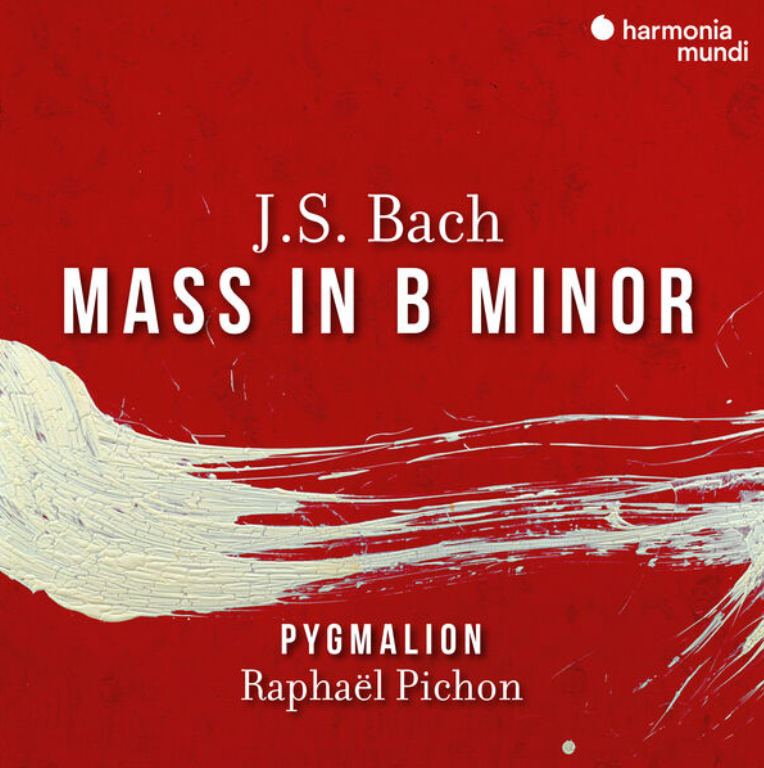
Pygmalion, Raphaël Pichon, “J.S. Bach – Mass in B Minor”
The Mass in B Minor by J.S. Bach, performed by the Pygmalion Ensemble under the direction of Raphaël Pichon, is an excellent test of vocal and orchestral sound separation. From the opening Kyrie, the MA3i unveils a stunningly transparent soundscape where each voice in the choral ensemble stands in distinct, three-dimensional space, never smeared or lost in the collective but instead presented with breathtaking individuality. Soprano lines soar with purity and air, altos glow with warmth, while tenors and basses ground the performance with rich, resonant authority.
The DAC’s rendering of vocal timbre is so natural, so finely resolved, that you can almost detect the slight variations in vibrato, the breath between phrases, and the expressive intent of each singer. What’s more, the Baroque instrumentation is delivered with immaculate precision. The string sections, woodwinds, and period brass shimmer with color and texture, each instrument occupying its rightful place without ever masking or crowding the others. The continuo is rich and present, the harpsichord sparkling but never strident. The grandeur and intimacy of Bach’s composition are fully realized here, making this DAC not just a technical marvel but an instrument of profound musical insight. For lovers of vocal and early music, this is an extraordinary window into the divine.

Thibaut Garcia, “Guitar Springtime”
Thibaut Garcia is a French classical guitarist. This album, Springtime, features a diverse collection of pieces by various composers.
The EMM Labs MA3i DAC helped produce a captivating journey into the world of pure tone and expressive nuance. From the opening notes, the MA3i showcased the exquisite clarity and delicacy of Garcia’s playing, accompanied by a startling sense of intimacy. The twang of each nylon string was rendered with such immediacy and precision that you can hear not only the pitch and decay but the subtle mechanics of Garcia’s touch: the gentle scrape of fingertip against string, the crisp snap of a well- articulated note, and the resonant bloom that follows each pluck. There is no blur, no smearing, just unadulterated sound, full of air and texture.
The MA3i captured the guitar’s complex harmonic structure beautifully, lending weight to the body resonance while allowing the treble to shimmer with a delicate, bell-like clarity. Dynamics are handled with finesse, from whisper-soft passages to spirited, percussive flourishes, all delivered with micro-detail and emotional presence. The DAC’s reproduction of space further enhances the experience, recreating the ambient cues of the recording environment with natural reverb and an almost tactile sense of distance and depth. With Springtime, the EMM Labs MA3i doesn’t just reproduce the performance; it invites you into the moment of creation, where every note feels intentional, honest, and alive. For guitar aficionados and lovers of minimalist classical recordings, this is digital playback at its finest.

Jean-Efflam Bavouzet, “Ravel: Complete Works for Solo Piano”
Solo piano is no easy task for the audio chain, as many notes can be played simultaneously. Listening to Ravel – Complete Works for Solo Piano performed by Jean-Efflam Bavouzet through the EMM Labs MA3i DAC is an experience of staggering transparency and refinement, particularly in the way it navigates the shimmering delicacy of Ravel’s more ethereal passages.
From the opening bars, the MA3i reveals an uncanny ability to separate each note with crystalline clarity, allowing the listener to follow the filigree of Bavouzet’s touch. In a piece like Pavane pour une infante défunte, where the music hovers between sound and silence, the DAC delivers every keystroke with immaculate articulation. Each note is distinct yet seamlessly flows into the next. The decay of a soft chord lingers with natural elegance. The upper registers sparkle without edge, while the lower octaves resonate with depth and control, never muddying the texture.
This separation never comes at the expense of musical cohesion; rather, it enhances it, shedding light on Ravel’s meticulous voicings and internal counterpoint (the relationship of two or more simultaneous musical lines – also called voices – that are harmonically interdependent yet independent in rhythm and melodic contour).
The MA3i renders the piano not just as a singular instrument but as a full palette of tonal colors, faithfully capturing the instrument’s mechanical nuance, from the lightest pedal release to the subtlest hammer strike. The result is an emotionally vivid and technically pristine listening experience that honors both Ravel’s refined artistry and Bavouzet’s interpretive brilliance.

Ned LeDoux, “Next in Line”
Frankly, I am not a big fan of Country music, but occasionally, one shows up that I like, such as this one by Country singer, Ned Ledoux.
This album, through the EMM Labs MA3i DAC, is a striking demonstration of how clarity, separation, and tonal integrity can elevate a straightforward country recording into something truly immersive. From the first track, the MA3i makes it abundantly clear that this DAC is not just about detail; it’s about balance and space. LeDoux’s voice, rugged and warm with a hint of that classic western twang, is projected front and center with a lifelike presence that feels tangible, almost as if he’s in the room with you.
What’s truly impressive, though, is how the MA3i preserves the individuality of the backup instruments behind him: full-bodied electric guitar and pounding drums, each rendered with distinct textures and dimensionality. There’s no bleeding or crowding; the backing band is spread out across a naturally wide soundstage, giving each player room to breathe while still supporting the vocal line with cohesion and energy.
The DAC’s low-end is tight and tuneful, keeping the rhythm section grounded without overwhelming the midrange, while the highs, especially the shimmer of crash cymbals or the metallic zing of steel strings, retain a smooth, open quality that never fatigues. This level of separation feels honest, letting the soul of the performance shine through.
There is essentially no distortion with the MA3i. If you like to have some distortion that gives you a warm sound, pair the MA3i with either a tube preamplifier or tube power amplifier. In this way, you control the sound.
I tested the EMM Labs MA3i using signals at -0.001 dBFS, which delivers the DAC’s full output.
At 1 kHz, 16/44.1, all harmonics were below -110 dB (Figure 1). Only the 2nd-ordered and 3rd-ordered harmonics are visible, and just barely. Keep in mind that this is at full DAC output. Lower recording levels, which would be the case 99% of the time, will give even less distortion.
Using 24/192 sampling (Figure 2), the same harmonics are there, and they are a bit more visible because the noise floor is lower.
In Figure 3, below, the IMD test is shown, using 60 Hz and 7 kHz sine waves. Whatever IM peaks are there, are so low, they are not visible.
24/192 sampling allows the IM peaks to be seen (Figure 4). The IM peaks are located at the slight widening of the base of the 7 kHz sine wave peak.
It appears that the MA3i uses 10 dB of noise shaping above 27 kHz. You can see the rise in noise above 27 kHz in the spectrum below. The noise level in the 27 kHz and up range is at -120 dB compared to -130 dB in the audible band. Noise shaping moves noise from the audible band into regions above the audible band (20 Hz – 20 kHz). It is a clever method to reduce noise in the audible band. You can read about how noise shaping is used in this article I wrote in 2017.
Using 19 kHz and 20 kHz sine waves results in the same thing – almost impossible-to-see side peaks (Figure 5). And, there is essentially no B-A peak at 1 kHz. Superb!
With 24/192 sampling, some very tiny side peaks are visible (Figure 6), and I mean tiny.
The Frequency Response at 16/44.1 (yellow line), 24/96 (red line), and 24/192 (green line) are shown in Figure 7. 16/44.1 has a fast roll-off, while 24/96 and 24/192 have slow roll-off characteristics. The measured response is 10 Hz – 50 kHz minus 1.5 dB.
Linearity is shown in Figure 8. 16/44.1 falls off at about -97 dB, while 24/96 and 24/192 fall off at -119 dB.
Jitter tests are shown in Figures 9 and 10, below (Figure 9 is 16/44, and Figure 10 is 24/192). I inserted 1 μsec of 1 kHz sine jitter into the 10 kHz test signal, and the EMM Labs MA3i DAC decoded the jittered signal. The output is shown in the figures. If the MA3i passed the jitter through, there would be large side peaks at 9 kHz and 11 kHz. There are no such peaks, so the MA3i has a re-clocking circuit, and it does a good job. The reason this is important is that when using a DAC that is connected via USB to a laptop that streams digital music to the DAC, there can be a lot of jitter in the signal. That is just the way USB is.
Here are some spectra from various music albums on Qobuz that I streamed into the MA3i DAC.
I confirmed that the MA3i DAC can accept 32/384 PCM. Shown below is a sample test at 1 kHz. In this case, I turned up the volume control to 100. Distortion was so low in the previous tests, I wanted to find out what this DAC can do. As you can see, distortion is still at -115 dB at full volume. This is some piece of electronics! I cannot remember ever seeing a hi-fi product that had essentially no distortion with everything turned up to the max. It must have a very large power supply.
The MA3i can also handle DSD. Here is a spectrum with DSD64. Notice how the total amount of noise shaping is quite high. This is due to the noise shaping inherent in the MA3i, plus the noise shaping in the DSD64 test signal, which begins at 22 kHz.
At DSD128, which the MA3i also accepts, the inherent MA3i noise shaping is the only noise present. The DSD128 noise shaping is above 50 kHz.
And here is a representation of the Frequency Response at 32/384. The Audio Precision does not create or analyze 32/384, so I measured the dBV output level at different frequencies. The AP simply displays an analog input at those frequencies after the MA3i decodes them. In this set, I measured the FR at full volume (100) on the MA3i, and digital test signals at -5 dBFS.
You can see that the response is down 0.5 dB at 22 kHz, 1 dB at 36 kHz, and 2 dB at 50 kHz. The response fall-off is sharper after 50 kHz, and at 100 kHz, the response is down 7 dB, and so on. Although the response is far down at 191.5 kHz, this is way beyond our hearing. So, the usable response is about 50 kHz for those who like their high-res music to have all the frequencies that a symphonic orchestra can create. What I really wanted to do was just make sure the MA3i can handle 32/384, and it sure can.
Here is a Frequency Response curve with the data from using a volume setting of 98 and test frequencies input to the DAC at – 5 dBFS. The curve appears to be an extension of the 24/192 curve shown in Figure 7. Rolling the response off like this is a good idea because we cannot possibly hear 100 kHz – 190 kHz, and this will help keep radio frequency effects out of the audible band.
A zoomed-in response is shown below. You can see that the response is down 1 dB at 36 kHz (from 6.6 dBV to 5.6 dBV).
Although high-resolution music is common now, it is delusional to think we can hear much of anything above 20 kHz. A 2013 study by R. Singh, R. Saxena, and S. Varshney in The Internet Journal of Otorhinolaryngology, entitled, “Early detection of noise induced hearing loss by using ultra high frequency audiometry” (https://ispub.com/IJORL/10/2/4039) shows that, even when we are young, our threshold for hearing high frequencies is poor compared to the midrange and low frequencies.
The threshold deteriorates rapidly throughout adulthood, and it is accelerated by exposure to noise (see figure below). Look how fast the threshold increases below 16 kHz (the threshold is the loudness required to hear the frequency), even when we are young (the threshold for all age groups at 20 kHz is between about 95 dB SPL and about 108 dB SPL in an enclosed test chamber that has no ambient room noise). This is a more realistic upper limit to our hearing. The point is that noise shaping beginning at 22 kHz is not going to affect what we can realistically hear in DSD music files.
Now let’s look at the spectra from some music streamed from Qobuz into the MA3i using the NET input and selected with my phone and the MConnect app.
The Art Pepper album is 16/44.1, but the spectrum shows that there is additional signal above 22 kHz. It may actually be 24/96. Streaming music is like the “Life is like a box of chocolates, you never know what you’re going to get.”
Here is a spectrum from the Art Pepper album streaming from the MA3i connected to my network and controlled by the MConnect phone app. It’s not exactly in the same spot, but I wanted to show some additional data. Notice that there are definitely some signal in the 35 kHz – 45 kHz range which is probably noise shaping. The slight dip at 22 kHz suggests this may originally be a 16/44.1 rendering.
Anne Akiko Meyers’ violin has lots of harmonics which are part of the violin’s sound. This is a 24/96 album. You can see violin harmonics all the way out to 37 kHz. Wouldn’t it be nice if we could hear them? The upper range is higher than the -120 dB noise shaping, so the music is not affected by it. However, we cannot hear or sense sound in the 35 kHz range.
A pipe organ can play deep sounds down to 20 Hz, maybe even lower than that. This album is 16/44.1 PCM, but it also has some up-sloping signal above 22 kHz which is probably noise shaping left over from modern recording studios’ ADCs that are almost entirely Delta-Sigma in design these days. When the analog audio from the microphones goes through the Delta-Sigma ADC, it over-samples the signal (e.g., 64× or more), then converts it into a 1-bit high-rate bitstream. The ADC uses noise shaping to push quantization noise out of the audible band (20 Hz – 20 kHz), then decimates and filters the result to produce standard PCM at 44.1, 96, or 192 kHz.
OK, so most of you are thinking, “Why spend so much money on a DAC?”
The question becomes, “What is the point of purchasing a high-end, high-priced DAC if I can’t hear the difference between the expensive DAC and lower-priced DACs that have a little more distortion?”
Well, to start with . . .
- Total harmonic distortion (THD) doesn’t simply add up when components are cascaded. Different harmonics can create new frequencies, complicating the final sound
- In audio systems, nonlinear distortions like harmonics might interact, making the total effect harder to predict.
- Research suggests that distortion from each component in a hi-fi system does add up in the final output, but not always in a simple linear way.
- The evidence leans toward distortions combining based on their type, with harmonic distortions potentially adding linearly for the same order, while interactions can create new harmonics.
- It seems likely that for small distortions, the total distortion is approximately the sum of individual distortions, but this can vary with component interactions.
The Details
Understanding Distortion in Hi-Fi Systems
Distortion in a hi-fi system refers to any alteration in the audio signal as it passes through components like amplifiers, speakers, and turntables, affecting the sound quality. Each component can introduce different types of distortion, such as harmonic, intermodulation, phase, or frequency response distortion, and noise.
How Distortions Combine
When audio signals pass through multiple components in series, the distortions from each component do not simply add up linearly in all cases. For instance, if one component introduces second-harmonic distortion and another introduces third-harmonic distortion, their contributions to the final output depend on how these distortions interact. Research suggests that for the same type of harmonic distortion, such as the 2nd-order harmonic, the amplitudes may add linearly, but for different types, new harmonics can be generated, complicating the total distortion.
For small distortions, it seems likely that the total harmonic distortion (THD) can be approximated as the square root of the sum of the squares of individual THDs, assuming they are uncorrelated. However, in practice, the distortions can compound, with each component distorting both the original signal and the already distorted signal from previous components, leading to a more complex interaction.
Practical Implications
Given the complexity, the final output’s distortion is influenced by the chain of components, and minimizing distortion at each stage is crucial for high-fidelity sound. For example, amplifiers and speakers each contribute differently, with speakers often introducing more noticeable distortion due to their mechanical nature.
Background on Hi-Fi Systems and Distortion
A hi-fi system is designed to reproduce audio with minimal distortion, comprising components such as amplifiers, speakers, turntables, and digital sources like DACs and CD players. Distortion, in audio terms, refers to any deviation in the output signal from the input, altering the waveform and potentially degrading sound quality. Common types include:
- Harmonic Distortion: Introduces frequencies that are multiples of the input (e.g., second, third harmonics).
- Intermodulation Distortion: Occurs when multiple frequencies interact, creating sum and difference frequencies.
- Phase Distortion: Alters the phase relationship between frequencies.
- Frequency Response Distortion: Uneven amplification or attenuation across frequencies.
- Noise: Unwanted signals added to the original audio.
Each component in the chain – source, preamplifier, power amplifier, and speakers – can introduce these distortions, and the question is whether they accumulate in the final output.
Theoretical Analysis of Distortion Accumulation
To understand how distortions add up, consider a hi-fi system as a series of components, each processing the signal sequentially. For two components, A and B, if component A outputs a signal yA(t) = fA(x(t)), where x(t) is the input and fA includes distortion, and component B outputs y(t) = fB(yA(t)), the total distortion is the result of fB applied to the already distorted signal from A. This compounding effect suggests that distortions do not simply add linearly but interact in complex ways.
For harmonic distortion, if component A introduces second-harmonic distortion (e.g., y = x+ax2), and component B also introduces second-harmonic distortion (e.g., z = y+by2), the combined output z = x+ax2 + b(x+ax2)2 includes terms like (a+b)x2, indicating that second-harmonic amplitudes add linearly for the same order.
However, if component B introduces third-harmonic distortion (e.g., z = y+cy3), new harmonics can arise from interactions, such as third harmonics from c(x+ax2)3, which includes cx3 and higher-order terms involving a.
Research suggests that for small distortions, the total THD (total harmonic distortion) can be approximated as the square root of the sum of the squares of individual THDs, akin to noise addition in linear systems. For example, if component A has THD_A and component B has THD_B, the total THD might be  , assuming uncorrelated distortions. However, this approximation holds better for linear distortions and may not fully capture nonlinear interactions.
, assuming uncorrelated distortions. However, this approximation holds better for linear distortions and may not fully capture nonlinear interactions.
Empirical Evidence and Component-Specific Distortions
Empirical studies highlight that speakers often contribute more significant distortion (around 1%) compared to amplifiers (below 0.01%) due to their mechanical nature. This difference arises because speakers create low-order harmonics and intermodulation distortion, while solid-state amplifiers may introduce crossover distortion, audible above 0.3%.
In a cascaded system, the distortion from the first component is passed to the next, which then distorts both the original signal and the distorted part. For instance, if an amplifier introduces 0.1% THD and a speaker adds another 1%, the total distortion is not simply 1.1% but involves interactions that may amplify certain harmonics.
Mathematical Modeling and Approximations
To model this, consider a simple case where each component has a power series expansion: y = a1x + a2x2 + a3x3 + . . . For two components in series, the overall transfer function is the composition, and for a sine wave input x = Xcos (ωt), the output includes harmonics at multiples of ω. For second-order distortion, the second-harmonic amplitude adds linearly (e.g., (a+b)X2/2), but for mixed orders, new harmonics emerge.
For practical hi-fi systems, where distortions are typically small (e.g., below 0.1%), the total distortion is often approximated as additive, but this simplification may overlook interactions, especially at higher volumes or with nonlinear loads.
Practical Implications for Hi-Fi Design
Given these findings, minimizing distortion at each stage is critical. For example, choosing amplifiers with low THD (e.g., below 0.01%) and speakers with controlled harmonic distortion can reduce cumulative effects. User experiences, such as those on A/V Forums, highlight that distortion can become noticeable when components interact, suggesting that system design must account for cumulative effects.
Table: Example Distortion Contributions in a Hi-Fi System
Below is a hypothetical table illustrating how distortions might add up for two components, assuming small THD and linear addition for simplicity:
| Component | THD (%) | Type of Distortion | Contribution to Final THD (%) |
| Amplifier | 0.1 | 2nd-ordered harmonic | 0.1 |
| Speaker | 1.0 | 2nd and 3rd harmonic | 1.0 |
| Total | – | Combined | ~1.1 (approximate, linear add) |
The actual total THD may vary due to interactions.
So, distortion in each component of a hi-fi system does add up in the final output, but the accumulation is complex, involving linear additions for similar harmonics and potential generation of new harmonics through interactions. For small distortions, approximations like  are used, but real-world systems require careful design to mitigate cumulative effects, especially given the differing contributions from amplifiers and speakers.
are used, but real-world systems require careful design to mitigate cumulative effects, especially given the differing contributions from amplifiers and speakers.
Since distortions of each component in the signal path do add up one way or another, it seems like a good idea to get the highest quality components all along the path.
Secrets Sponsor
The EMM Labs MA3i D/A Converter is a superb electrical engineering accomplishment. Its standout feature is vanishingly low harmonic distortion. Remember, though, what gets to the speakers is limited by the highest distortion component in the signal chain, including the speakers, for that matter. If you obtain a DAC of this quality, you need to be sure your other components are worthy. And, if your other components are really high-end, don’t buy a $200 DAC.
- Astonishingly low distortion.
- Near-perfect sound.
- Priced for the performance.
- Front panel and remote control button for switching DAC into and out of stand-by power.
- Larger on/off toggle on the rear panel for large fingers like mine.
REFERENCES
- https://ispub.com/IJORL/10/2/4039
- https://hi-fiworld.co.uk/index.php/amplifiers/75-amp-tests/118-distortion.html
- https://www.quora.com/Why-are-differences-in-hifi-amplifier-distortion-parameters-well-below-0-01-of-any-importance-when-even-the-best-HiFi-speakers-distort-at-more-like-1
- https://hackaday.com/2021/07/29/know-audio-amplifiers-and-distortion/
- https://en.wikipedia.org/wiki/High_fidelity
- https://www.soundguys.com/what-is-distortion-thd-47149/
- https://www.allaboutcircuits.com/technical-articles/what-is-it-about-audio-distortion/
- https://en.wikipedia.org/wiki/Total_harmonic_distortion
- https://www.sciencedirect.com/science/article/pii/S2314717216300472
- https://resources.system-analysis.cadence.com/blog/msa2021-types-of-harmonic-distortion
- https://www.sciencedirect.com/topics/engineering/total-harmonic-distortion
- https://www.gamry.com/application-notes/EIS/total-harmonic-distortion/
- https://www.allaboutcircuits.com/technical-articles/the-importance-of-total-harmonic-distortion/
- https://t.ly/unvK4


